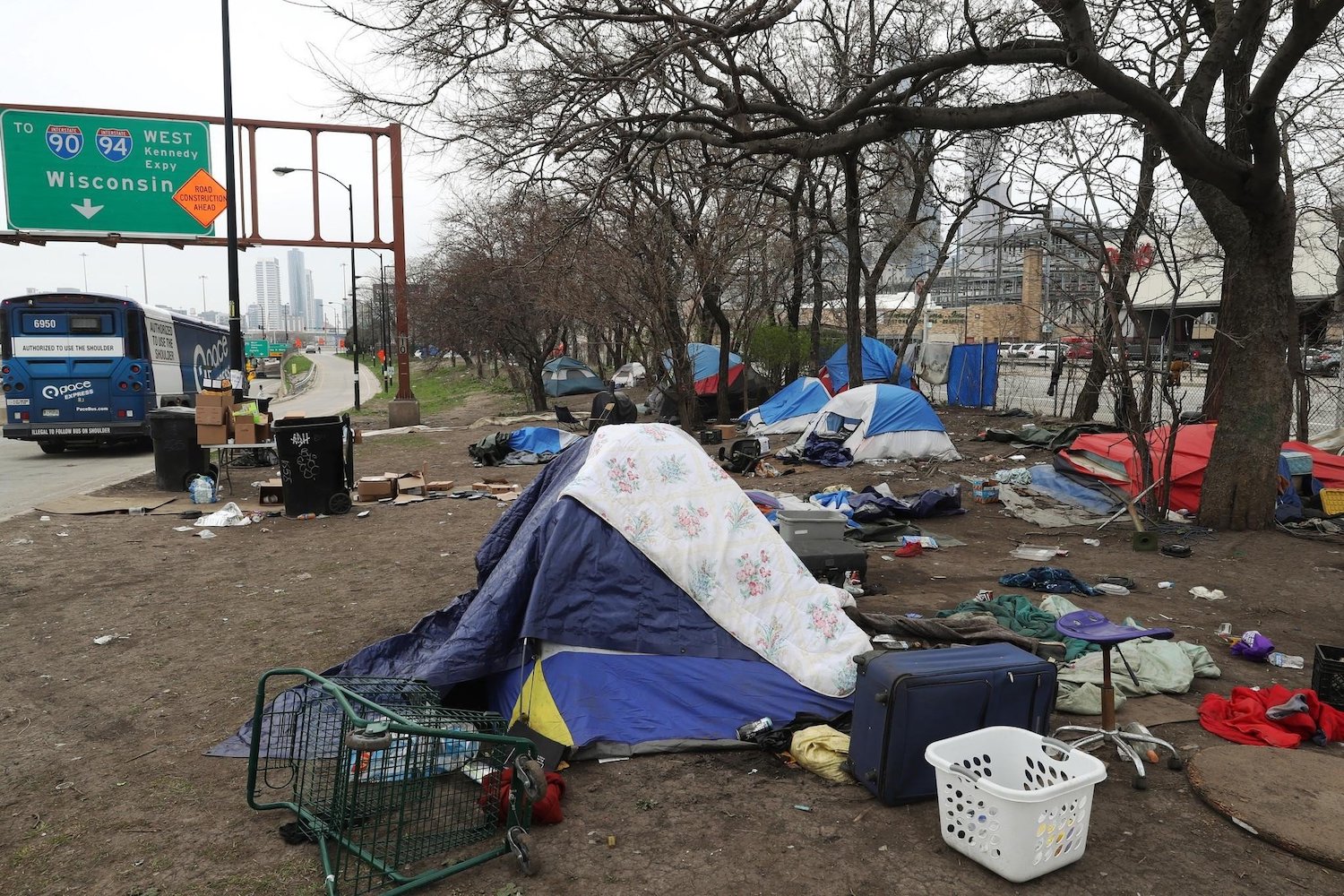Chicago Homeless Encampment Cleared Out, Relocated to Shelter
City Workers Take Down Dan Ryan Expressway Camp
Residents Face Challenges as Homelessness Rises in Chicago
On Wednesday, March 1, 2023, city workers demolished a significant homeless encampment near the Dan Ryan Expressway, marking the start of a citywide effort to clear out similar tent cities ahead of next month's Democratic National Convention.
The Dan Ryan encampment, home to dozens of unhoused individuals for months, has been a focal point of scrutiny for neighbors. Now, its residents have been relocated to a temporary shelter as the city grapples with the escalating crisis of homelessness.
The closure of the Dan Ryan encampment highlights the challenges facing Chicago in addressing its growing homelessness problem. According to a 2022 report, the city's homeless population has increased by 12% since 2020, with over 15,000 people experiencing homelessness on any given night.
For Cesar Dil, a resident of the Dan Ryan encampment, the city's efforts to relocate its homeless population to shelters are met with mixed emotions.
- Challenges of Encampment Life: Dil acknowledges the challenges of living in an encampment, including exposure to extreme temperatures and the lack of basic sanitation and medical care.
- Shelter Concerns: However, he also expresses concerns about the conditions in shelters, citing overcrowding and the potential for violence and theft.
- Need for Affordable Housing: Dil emphasizes the need for more affordable housing options in Chicago, as many individuals struggling with homelessness cannot afford traditional housing costs.
As the Democratic National Convention approaches, Chicago aims to present a more positive image by clearing out visible signs of homelessness. Yet, the city must also address the underlying systemic issues that contribute to the city's homelessness crisis.
Experts emphasize the importance of a comprehensive approach that includes:
- Expanding Affordable Housing: Increasing the supply of affordable housing units to meet the needs of those struggling with homelessness.
- Supporting Services: Providing wrap-around services such as job training, mental health support, and addiction treatment to help individuals break the cycle of homelessness.
- Preventing Homelessness: Implementing programs to prevent individuals from losing their homes in the first place through rental assistance and eviction prevention.
By addressing the root causes of homelessness, Chicago can strive towards a more just and equitable city for all its residents.
Additional Resources:
- Chicago Department of Family and Support Services
- Chicago Metropolitan Agency for Planning: Addressing Homelessness in Chicago
- National Coalition for the Homeless: Ending Homelessness


Komentar